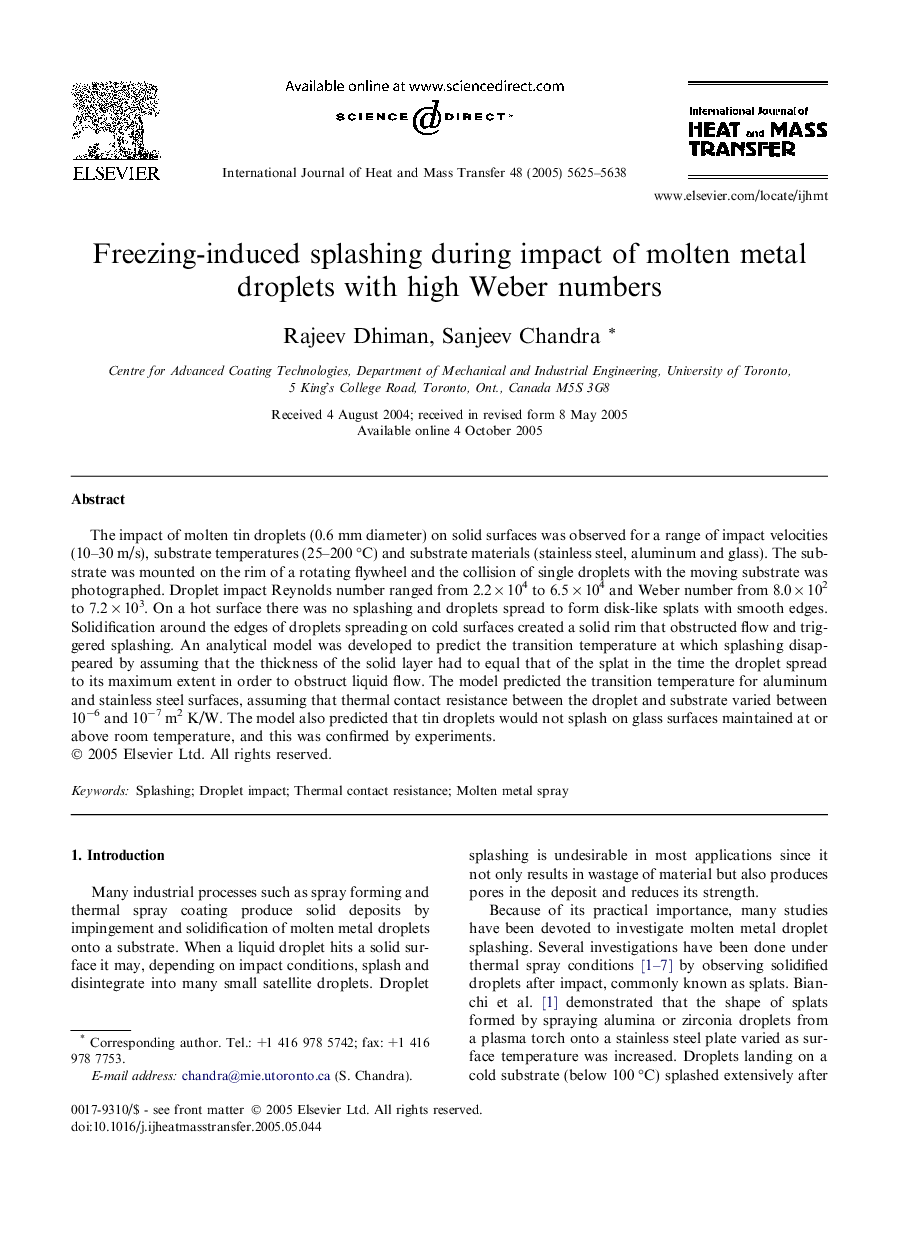| Article ID | Journal | Published Year | Pages | File Type |
|---|---|---|---|---|
| 662613 | International Journal of Heat and Mass Transfer | 2005 | 14 Pages |
The impact of molten tin droplets (0.6 mm diameter) on solid surfaces was observed for a range of impact velocities (10–30 m/s), substrate temperatures (25–200 °C) and substrate materials (stainless steel, aluminum and glass). The substrate was mounted on the rim of a rotating flywheel and the collision of single droplets with the moving substrate was photographed. Droplet impact Reynolds number ranged from 2.2 × 104 to 6.5 × 104 and Weber number from 8.0 × 102 to 7.2 × 103. On a hot surface there was no splashing and droplets spread to form disk-like splats with smooth edges. Solidification around the edges of droplets spreading on cold surfaces created a solid rim that obstructed flow and triggered splashing. An analytical model was developed to predict the transition temperature at which splashing disappeared by assuming that the thickness of the solid layer had to equal that of the splat in the time the droplet spread to its maximum extent in order to obstruct liquid flow. The model predicted the transition temperature for aluminum and stainless steel surfaces, assuming that thermal contact resistance between the droplet and substrate varied between 10−6 and 10−7 m2 K/W. The model also predicted that tin droplets would not splash on glass surfaces maintained at or above room temperature, and this was confirmed by experiments.
